Il Comandante's last service was on the 7th of January 2022, almost ten years after his debut at the Romeo Hotel: 'I had asked the owners for a sabbatical. I felt the need to change course, to update the technical equipment, to investigate the roots of Naples, and to deepen the sense of belonging to my city. They granted it to me. I was reborn'.
Salvatore Bianco is beaming because, after 15 months, he has reopened his flagship restaurant. Which is now one floor lower than before (from the tenth to the ninth) and has been completely redesigned in terms of space: the kitchen, now open, has been entirely redesigned. There are 12 tables (with the same breathtaking view as always) and, all around, everything has been rationalised to increase performance, content and overall logic.
On the hotel's minus one floor is a research and development laboratory filled with freeze-dryers, centrifuges, rotavapor, fermenters. Technical resources that today define a more complex proposal because it is richer in steps and interactions. Macerations and candying, thixotropies and fermentations, extractions and concentrations, acid gelifications...
But before being scientific, there is a historical depth in the details of the menu: 'I have spent so much time in libraries on cookbooks and texts on the history of Naples, a city born on magma and water. That is why I now open the meal with aromatised water (served by a kind lady just outside the lift, ed.) and close it with a grattella of water [sort of ice slush], cold maceration of bergamot and red apple. I worked on the concept of Dante's Purgatory, which here gives its name to an important traditional dish, and on the egg of the Siren Partenope that Virgil hid under Castel dell'Ovo. I went back to the first expressions of dry pasta, which date back to the 18th century, when the Neapolitans went from the nickname of Mangiafoglie [leaf-eaters] to that of Mangiamaccheroni... [pasta-eaters]’.
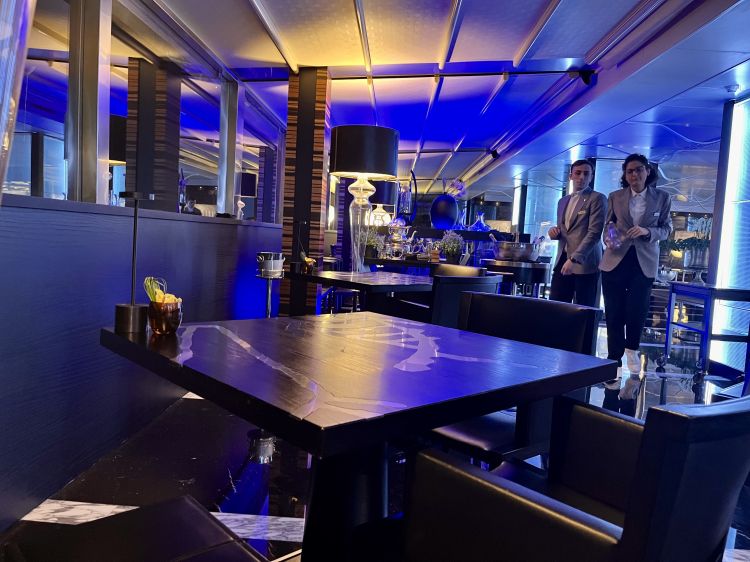
The new dining room at Il Comandante
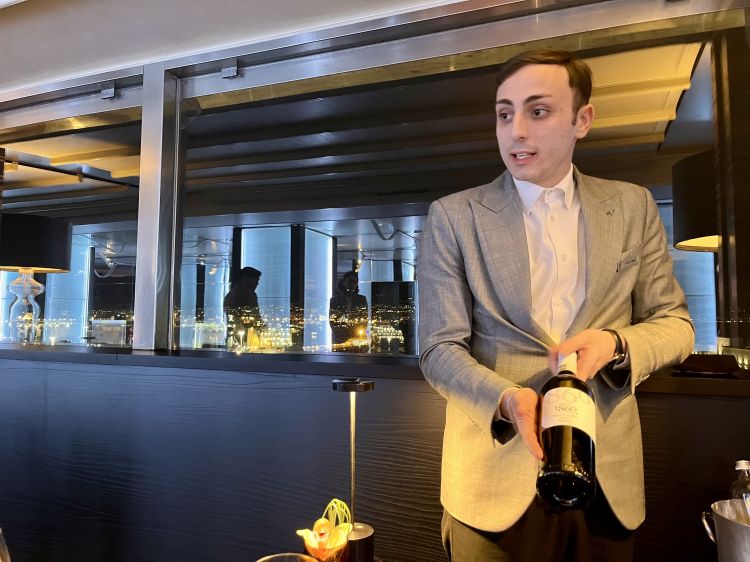
Giovanni Santoro, 27, sommelier from Pozzuoli
"‘Mangiafoglie’ is now also the name of the vegetarian tasting menu (5 courses). ‘Mangiamaccheroni’ (read more below) is the signature dish of ‘Evoluzione’, the brand new experimental menu with 7 courses that reinterpret the food anthropology of Naples, the home of which Bianco has now acquired new awareness. For those who don't feel like taking risks, there is a third, more accommodating menu called 'Origini', a sequence of 9 of the chef's classics.
We are still in the running-in phase because, after 15 months of closure, there are so many details to perfect: the calibrations of taste and flavour, some definitions of the impacts, the automatisms of service. But the new light is evident and good ideas abound. There is, for example, a bread menu: everyone chooses their own at the start of the meal so waste is minimised. And the wine list, composed by the very young
Giovanni Santoro, is built by lining up the reigns that have alternated in the city's government: Angevins, Spanish, Bourbons, French...
‘I realised that a great cuisine cannot grow up uprooted from its cradle,’ Bianco goes on to explain, ‘whoever travels seeks innovation and history: that is why you must not look far, but backwards and, at the same time, forwards. History and science. Sharp weapons that will also enrich the Romeo Hotel's next adventures outside Naples: in Rome starting next autumn (
with Alain Ducasse) and in Massa Lubrense in 2024. With a regenerated corporate chef: ‘I have also changed my personal approach: I no longer think of satisfying my own taste but the well-being of the customer and that of the people who work with me. I am happy.' And so are the dishes we tried.
The April 2023 menu at Il Comandante menu
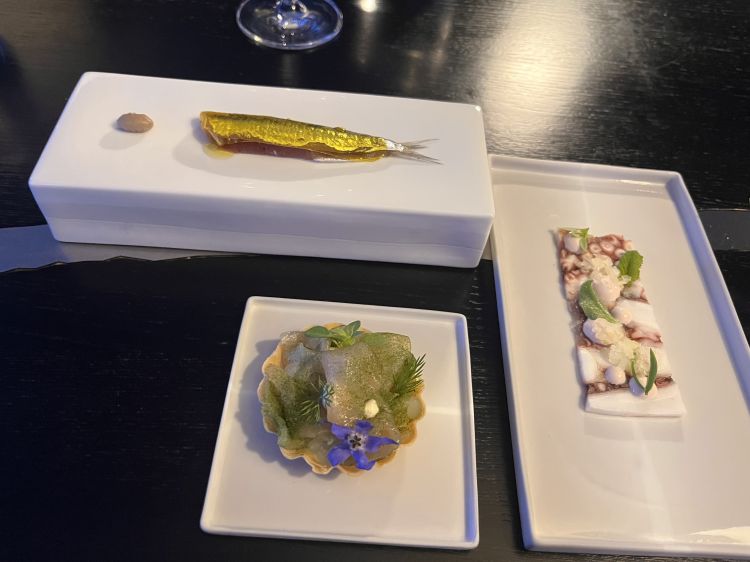
Entrée
Top centre, Pickled anchovies marinated in pink pepper (the nub on the left is a small garum made from anchovy waste). Right, Octopus terrine cooked in dashi, lemon cooked in nitrogen (not in the photo, a small glass of classic octopus broth, extracted with the Rotavapor). The Tartelletta in the foreground is made of phyllo pastry, topped with wasabi mayonnaise and holds smoked and marinated blue fish of the day. Bottom left, a twist on Pizza fritta: puffed pizza with ricotta and 'cicoli vegetali'. Top left, in the shape of a pig's snout, a vegetable (mushroom) Soffritto. Next to it a Paninetto of mosses and lichens, acorns and hazelnuts (a summary of what a pig in the wild eats)
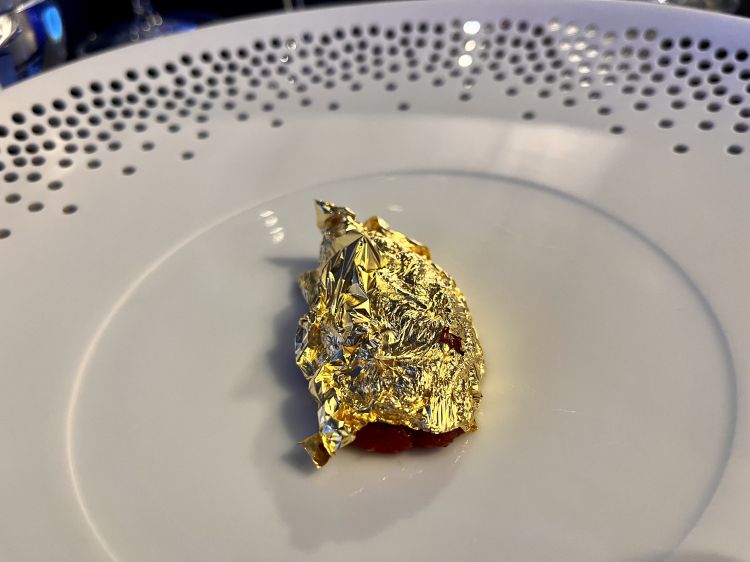
Pomo D'Oro
A single-ingredient dish that makes use of different types of tomatoes: San Marzano, pomodoro sorrentino, corbarino, ramato and piennolo. It has no seasoning because it relies on umami, the natural glutamate of the tomato, released through complex processes of concentration, extraction, drying and dehydration. Multi-faceted, it shows great depth of flavour (and next to it there is a tomato consommé to drink by the litre).
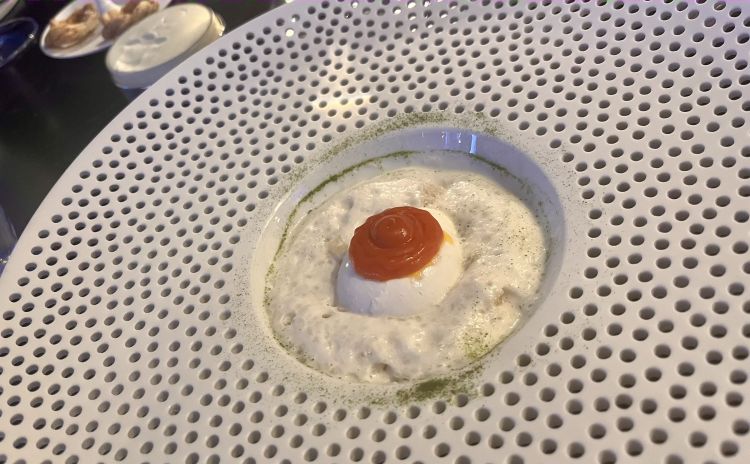
Antipurgatory
Poached egg, cooked at low temperature with tomato, oyster air, oysters and bread. It is a reinterpretation of the traditional Neapolitan Uova al purgatorio (also called uovo dei poverielli)
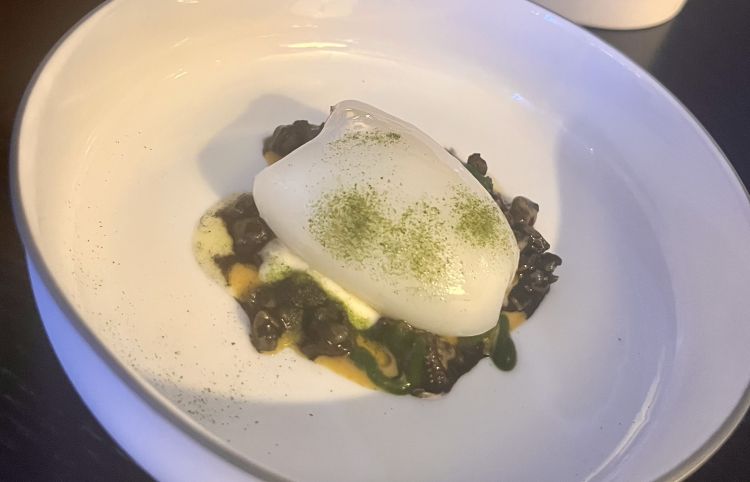
Cuttlefish
A no-waste dish, a digression from the 'Origini' menu: in the picture, flame-seared cuttlefish with cuttlefish ragout. On the left, out of the photo, there is some delicious fried lattume with misticanza and, finally, a cuttlefish bone reconstructed with cuttlefish milk and cuttlefish stock
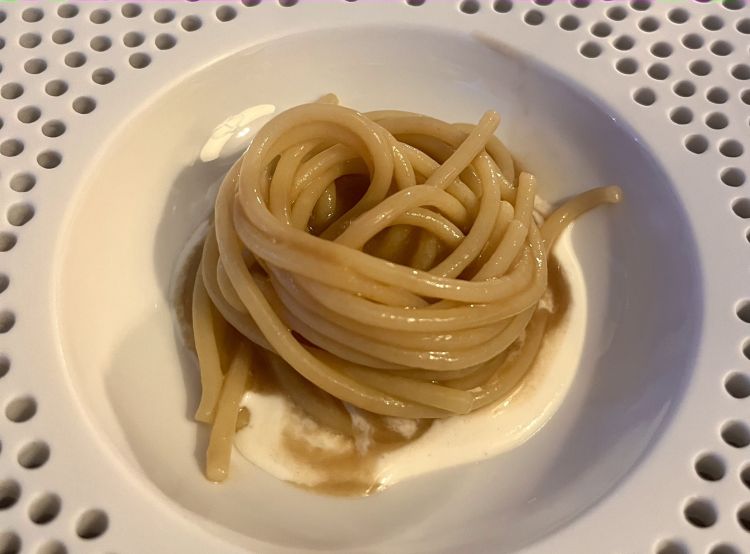
Mangiamaccheroni
Spaghetti (which used to be called 'maccheroni') cooked in a broth of coffee, barley, acorns and tobacco, topped at the table with a cream of fermented buffalo milk. Lactic, spicy and a hint of truffle in the distance (which is not there)
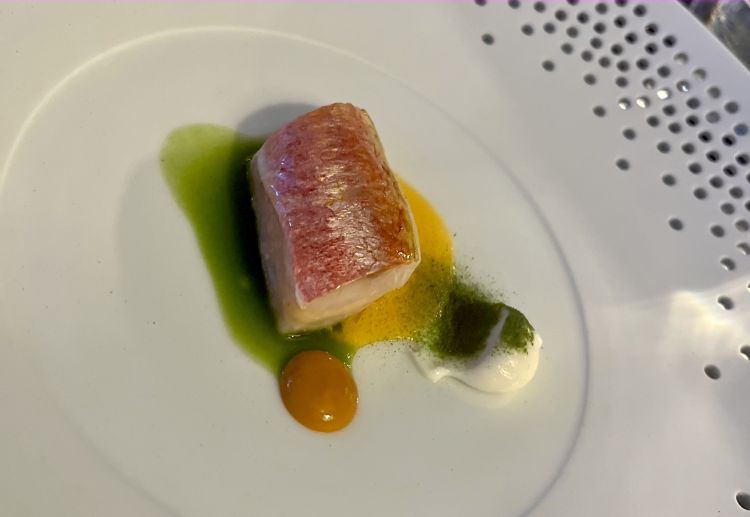
Mullet
Another dish from the 'Origini' menu: a steamed red mullet stuffed with red prawns. The ketchup and mayonnaise are made with the waste from the mullet
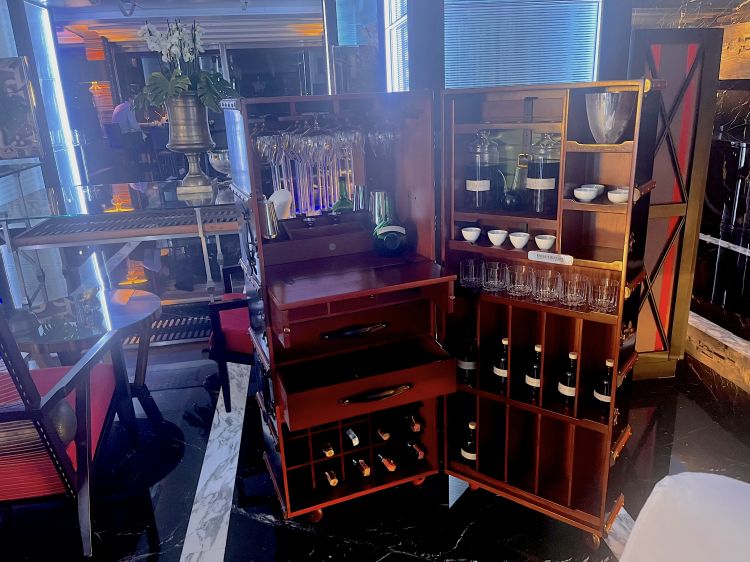
For the after-dinner entertainment, we move to the 'lounge' area, in another wing of the room. An amazing mobile-bar trolley arrives with lots of goodies and the house liqueurs, cherries in syrup or gin with vanilla. Bottles of sour cherry syrup, rosolio, artichoke liqueur, limoncello and lime, and a bitter of 28 herbs that the chef grows at home in Castellammare (laurel, basil, lemongrass, lavender...) are also available.
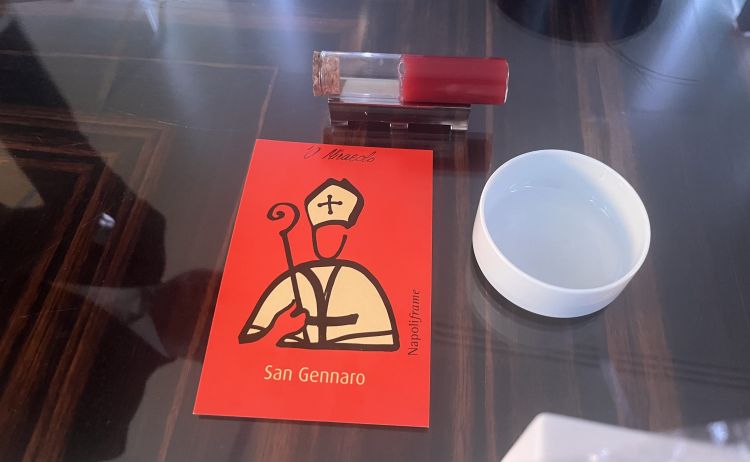
Among the end-of-meal games is the blood of San Gennaro to be melted. Technically, it is called 'thixotropy', a chemical-physical phenomenon that causes certain gels to pass into a liquid state by simple agitation. In this case, you drink it: it’s a delicious non-alcoholic Bloody Mary made with raspberry, strawberries, pomegranate and tomato
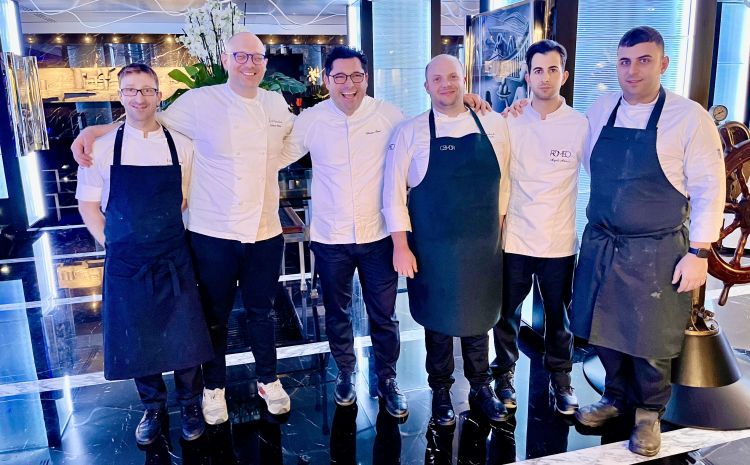
The kitchen brigade. Left to right, Giuseppe Voto, Roberto Boemio, Salvatore Bianco, Raffaele Langella, Angelo Artucci, Giuseppe Scala. Not present, the head pastry chef Antonino Maresca
Il Comandante del Romeo Hotel
Via Cristoforo Colombo, 45
Naples
+390810175001
Tasting menu: 140, 170 and 190 euros
Closed on Sundays and Mondays
Translated into English by Slawka G. Scarso